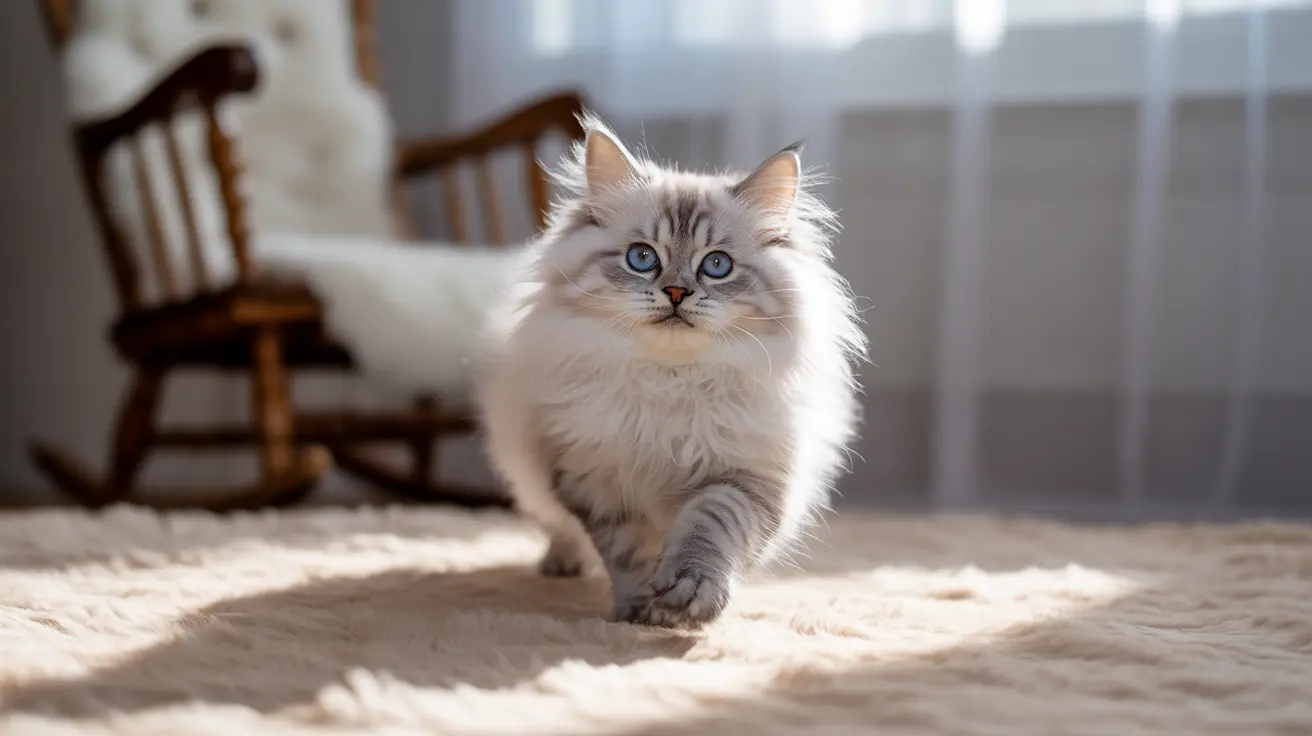If you've ever admired your feline friend's graceful movements or felt those soft, cushiony feet padding across your lap, you might wonder what cats' feet are called. While the simple answer is "paws," these remarkable appendages are complex structures that deserve a closer look. Let's explore the fascinating anatomy and function of cat paws, from their specialized pads to their retractable claws.
The Basic Structure of Cat Paws
Cat paws are marvels of evolutionary engineering, composed of several distinct parts working in perfect harmony. Each paw features multiple toe pads (often lovingly called "toe beans"), a larger central pad, and specialized muscles and bones that enable cats' legendary agility.
Front Paws vs. Back Paws
Front paws come equipped with five toes, including a dewclaw positioned higher up on the leg, while back paws have four toes. The front paws' central pad is called the metacarpal pad, while the back paws feature the metatarsal pad. This asymmetrical design helps cats maintain perfect balance and execute precise movements.
The Amazing Adaptations of Cat Paw Pads
Cat paw pads are specially designed with three distinct layers that work together to provide shock absorption, sensory feedback, and silent movement. The tough outer layer protects against wear and tear, while the middle layer offers flexibility, and the innermost layer provides cushioning.
The Secret to Silent Movement
The unique structure of cat paw pads allows them to move almost silently, a crucial advantage for both wild and domestic cats. The fatty tissue within the pads acts as natural shock absorbers, enabling cats to land gracefully from impressive heights while maintaining their characteristic stealth.
Understanding Cat Claws and Dewclaws
A cat's retractable claws are essential tools for hunting, climbing, and self-defense. Unlike human nails, cat claws grow directly from the bone and are naturally maintained through scratching behavior. The dewclaw, while often overlooked, serves an important purpose in helping cats grasp objects and maintain balance while climbing.
Caring for Your Cat's Paws
Maintaining healthy paws is crucial for your cat's overall well-being. Regular inspection can help detect injuries or problems early, while providing appropriate scratching posts helps maintain natural claw health. In winter, be especially mindful of protecting your cat's paw pads from ice, salt, and chemical de-icers.
Frequently Asked Questions
What are a cat's feet called and what parts make up their paws?
A cat's feet are called paws, consisting of toes (digits), paw pads, bones, muscles, and retractable claws. Each paw features digital pads under the toes and a larger central pad (metacarpal or metatarsal pad).
How many toes do cats have on their front and back paws, and what is a dewclaw?
Cats have five toes on their front paws (including the dewclaw) and four toes on their back paws. The dewclaw is a higher-positioned fifth toe on the front paws that helps with climbing and gripping.
Why do cat paw pads help cats move quietly and absorb shock when jumping?
Cat paw pads contain specialized fatty tissue and collagen fibers that absorb impact and muffle sound. Their three-layered structure allows for efficient shock absorption and silent movement.
How do I properly clean and care for my cat's paws to keep them healthy?
Regularly inspect paws for cuts or injuries, keep them clean, and provide scratching posts for natural claw maintenance. In winter, wipe paws after outdoor exposure to remove harmful chemicals or salt.
What are "toe beans" and why do cat paws have different colored pads?
Toe beans" is an affectionate term for the small paw pads under each toe, named for their bean-like appearance. Paw pad color varies based on genetics and often matches the cat's nose or fur color, ranging from pink to black or spotted.






